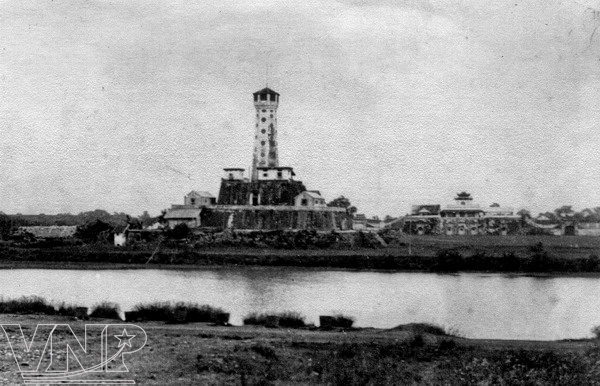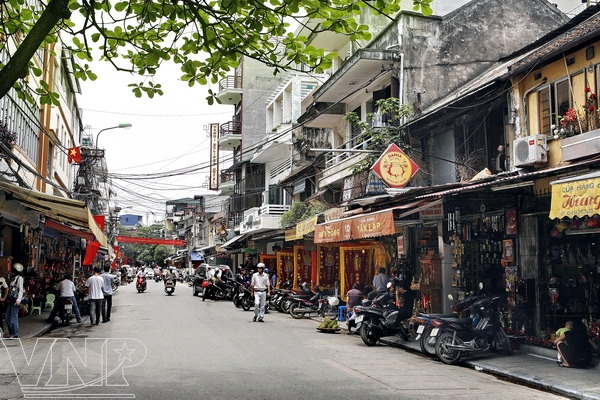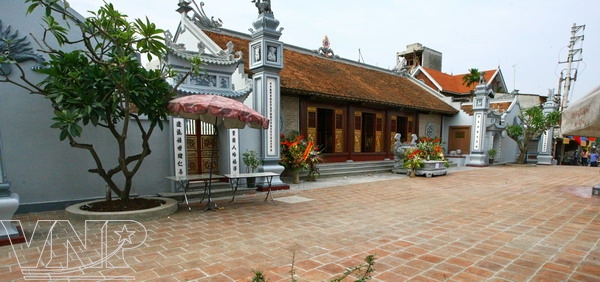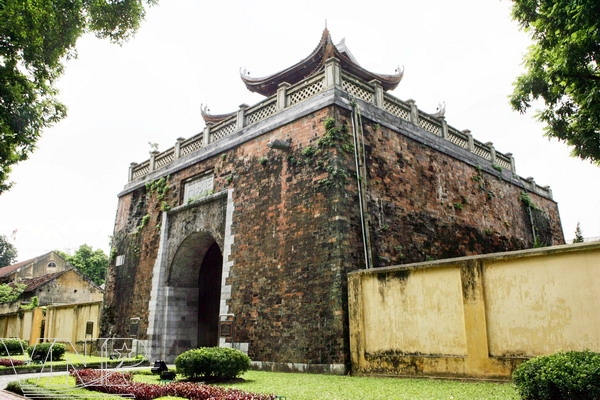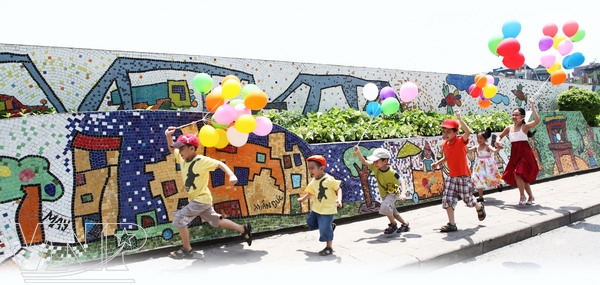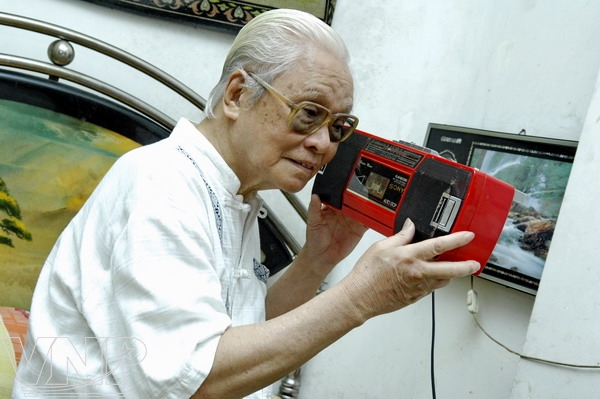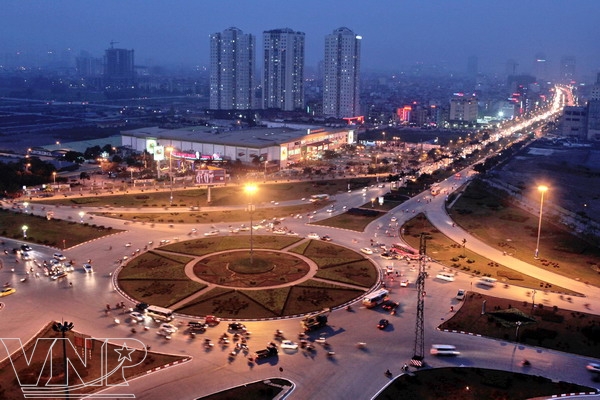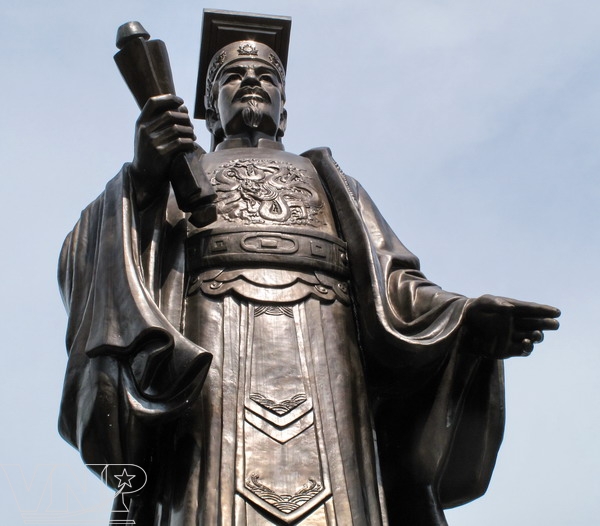One thousand years have passed since that Autumn day of the Canh Tuat Year (Year of the Dog - 1010) when a group of dragon boats, escorted by people holding pennants and beating drums, carried King Ly Cong Uan (974-1028) from the old capital of Hoa Lu, to a wharf on the Nhi Ha River (now the Red River). It was there the King saw a golden dragon soaring from the water’s surface to the high blue sky. Thinking that was a good omen, he declared the site Thang Long (soaring dragon) the new capital city of Vietnam.
"Thang Long is located in an area looking like a rolling dragon and a sitting tiger, and stretching in four directions – east, west, south and north, thus very convenient with mountains and rivers in the front or at the back. Throughout the whole country, it is the best place, geographically. It will be a meeting place for people coming from all four directions, and worthy of being the top-ranked capital..."
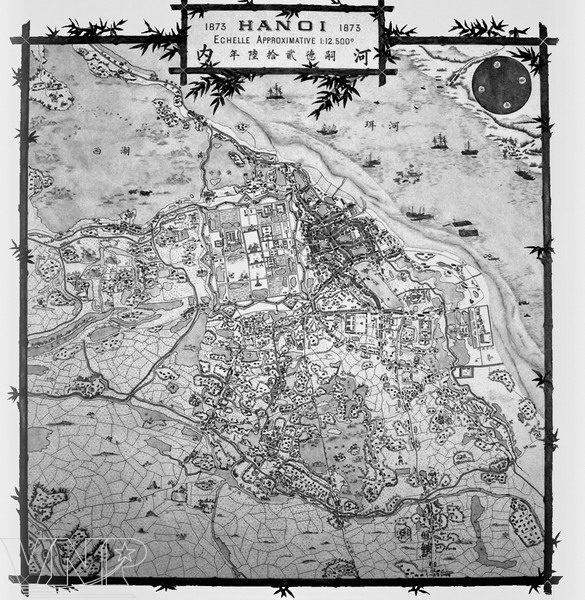 Map of Hanoi in 1873. |
|
Hanoi Flag Tower in the late 19th century – early 20th century. |
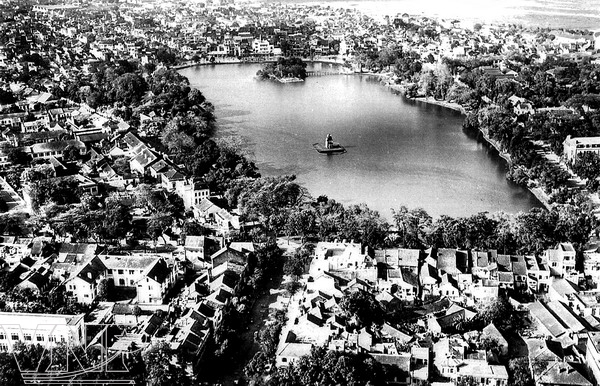 The bird-eye’s view of Ho Guom in the late 19th century – early 20th century. |
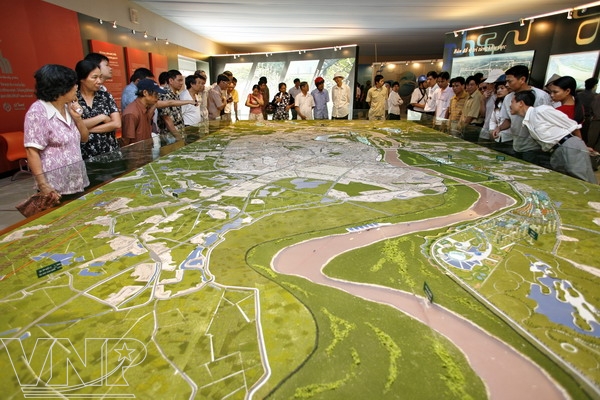 People view the model of the planning of Hanoi. |
 Architectural and infrastructural projects are built to serve urban development and the city's dwellers. |
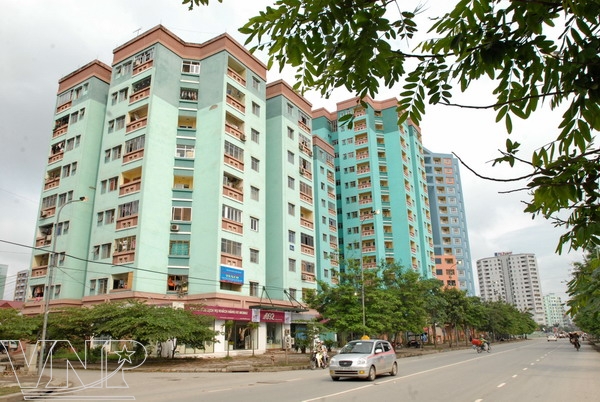 High-grade apartment buildings are mushrooming. |
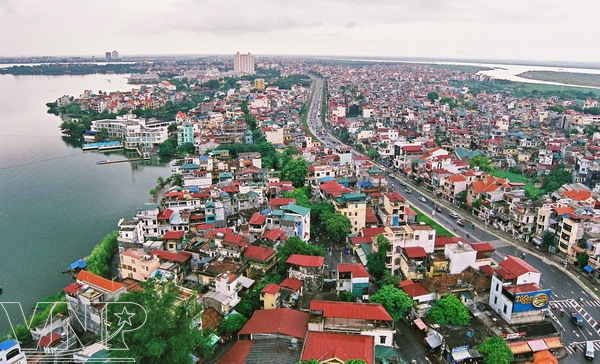 The area surrounding the West Lake, Hanoi. |
Those were written by King Ly Cong Uan in a proclamation to his court mandarins explaining why he decided to transfer the capital from Hoa Lu to Thang Long. The move was appropriate in terms of "good time, favourable terrain and uniting people". The Ly King's vision changed the fate of a land that was a small fishing village at the confluence of the Nhi and To Rivers.
Tales about the Viet ancestors' origin being the offspring of the Dragon and the Fairy, stories of the Golden Dragon appearing to welcome the new capital and the Soaring Dragon related to the name of the millennial city, all are a series of spiritual connections in the minds of the ancient Viet. The dragon became a symbol of the country of Great Viet – later Vietnam, built on the foundation of wet rice civilization. This historical stage was long lasting, over eight feudal regimes, i.e. the Ly, Tran, Ho, Le, Mac, Le – Trinh, Tay Son and Nguyen, through the time of the French colonialism, to the present-day Ho Chi Minh era. At a time, there was an intention to move the capital to Tay Do or change the name of the capital from Thang Long into Dong Do or Dong Kinh. Also, there was an interruption for nearly a century and a half when the Nguyen Dynasty reigned in the imperial city of Hue, and then nearly 70 years being a city of concession under the foreign domination with the East-West exchanges. Despite all of those, Thang Long – Hanoi has maintained its soaring position as a metropolis of the country and a symbol in the heart of the Vietnamese people.
The capital has undergone many ups and downs which changed its face many times. There was a lot of construction, and a lot of damages. Thang Long was not a battle-free zone. There were seven times when the enemies came with their stormy power and seven times when the city dwellers withdrew from the town, leaving it empty to defend their forces, allowing the enemy to stay for a short time before returning to wipe them out. The city's tradition is not only to defend itself, but to take care of its residents.
An aspiration for peace and a desire to be friends with other nations are motives for the actions and behaviours of the capital’s residents, and there are stories to testify that fact. For example, at one time the enemy occupied the Dong Quan (East Gate). Although stronger than the enemy, the city dwellers did not make an attack. Instead, they provided food for 100,000 troops of the Ming to safely withdraw from the city and go home. Also there is the legend of how King Le Loi returned the magic sword to the golden tortoise on the Luc Thuy (blue-water) Lake (hence later it changed into the Hoan Kiem, or Restored Sword Lake) after he won over the enemy and brought the country to peace.
According to the national historical documents, many times after prevailing over the invaders, the Viet court sent a messenger to the enemy's country to begin friendly diplomatic relations; many times they fought the enemy, at the same time sitting at the negotiating table, even "paved the road with flowery mats" for the defeated enemy to go home to their wives and children. There were also alters built to worship the souls of the enemy's dead troops, and trips made to find their remains to be returned to their relatives. Such actions of great humanity are unforgettable and handed down through generations.
The enemy forced us to bear arms. When they came, not only strong men went to the front, but also the elderly, women and youth, who practised martial arts and were ready to join the fight anytime needed. The strength to unite the entire people was a decisive factor in defeating the enemy, even though they were several times stronger.
During the sixty days and nights that started the national resistance war against the French colonialists, people of Hanoi pledged "to be determined to fight and die for the Homeland's survival". They struggled with the enemy for the control of each house and each street, expressing the brave spirit of our heroic nation.
In the anti-US resistance war, during the Christmas Bombing in 1972 over 12 days and nights by US air force, which was considered the most powerful force worldwide and which intended "to bring Hanoi back to the Stone Age", Hanoi was a huge fireball. Some B52 bombers were shot down, one crashing into Huu Tiep Lake and the survivors were jailed at Hoa Lo Prison (known by the Americans as the Hanoi Hilton).
Friends throughout the world praise Hanoi as "a capital of personal dignity". UNESCO awarded Hanoi the title "The City for Peace for 1999". The Vietnamese State and people honoured Hanoi as "a heroic capital" – heroic in fighting and heroic in re-construction and renovation for a better life.
Over more than 20 years of renovation, Hanoi has grown fast, like the legendary Giong Saint. New urban residential quarters with high-rise buildings have been built around Hanoi. Industrial zones have been established, and roads and highways built. There are new bridges crossing the Red River, besides the old Long Bien Bridge, such as Thang Long, Chuong Duong, Thanh Tri and Vinh Tuy Bridges, and many others are under construction.
In 2008, the third expansion of the capital enlarged the city, now covering an area of 3,340km2, with a population of nearly 6.5 million, 29 districts and towns, 577 wards and communes. The present-day Hanoi abounds with more mountains and hills, rivers and streams, forests, and fertile fields and craft villages, many of which helped in establishing Hanoi's Old Quarter with its 36 streets. Hanoi now has more potential, yet more challenges in planning and management are ahead.
With its rich tradition - patriotic, heroic, intelligent, skilful and elegant - Hanoi will surmount all difficulties. With the spirit "Hanoi for the whole country, and the whole country for Hanoi" and that of integration with friendly and open arms with people around the world and ready to co-operate for common development, Hanoians are on their way to advance forward, bringing the capital to a new height and new status, worthy of being the heart of the country.
Story: Giang Quan
Photos: VNP
Photos: VNP
admin


